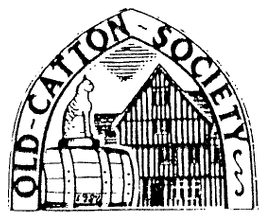Caroline Wilkes came to explain the work of the Norfolk Wildlife Trust. It was founded in 1926 when Cley marshes, then a wild-fowling reserve, came under the control under the control of the Norfolk Natural History Society, now renamed the Norfolk Wildlife Trust. Today, the 400 acre nature reserve is overlooked by a welcoming visitor centre with the new Simon Aspinall Wildlife Education Centre to the rear. Recently a large area of marshland between Cley and Salthouse has been added, accessed by the Attenborough Way in honour of David Attenborough who officially opened the site.
At Cley, water levels are kept high to suit winter wildfowl such as Geese, Teal and Wigeon needing deep water. Summer breeding species, such as Black-tailed Godwits, Redshank, Avocets and Lapwing, need lower levels to provide mud for feeding offspring.
The Trust now owns or manages over 38 reserves in Norfolk, of which 3 others, Hickling, Ranworth Broad and Weeting Heath, also have visitor centres. The Trust now aims to create a county-wide Living Landscape, with education a high priority.
Breckland is the most bio-diverse habitat in England with a wide range of plants, insect and birds. Weeting Heath is the key reserve where Stone Curlews (curious summer visitors) and Green Woodpeckers are the specialist species on grassland cropped by ponies, Roydon Common in West Norfolk is the largest lowland heath in the country, managed to keep open habitat, in which beetles and snakes are common. Foxley Wood supports a range of plants and butterflies and is the largest ancient woodland in the county, justly famous for its Bluebells in spring. The smallest reserve is the Hethel Thorn, just big enough for this one ancient bush.
A beautiful photograph of a hunting Barn Owl seen against a rising full moon concluded this very comprehensive fully illustrated overview of a wide range of habitats and species under the watchful care of the Trust.
Ray Jones
